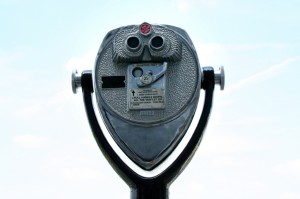Feed the Attention Meter
Your presentation can succeed or fail in the first thirty seconds.
As part of the research for my forthcoming book on strategic sales presentations, I’ve been interviewing dozens of current and retired senior executives to get their insights into what they look for when they’re on the receiving end of these pitches, and I’ve been getting some excellent gems, one of which I want to share in this post.
I was speaking to Charles Hand, who recently retired as Region President of a major telecommunications company. At his level, he would sit through an average of two presentations a month, so in his tenure he probably attended at least 100. One of his most important pieces of advice to salespeople is to structure your introduction to concisely state why they should listen.
On the surface, this sounds blindingly obvious, but if such a veteran of so many sales presentations felt compelled to bring it up, it’s clearly not as commonly followed as you might think.
Charles’ point sparked an image in my mind, of one of those pay binoculars you see at a scenic location, where you put in a quarter and then try to look around and see as much as you can before it blacks out. You never know how long it’s going to last, and if you haven’t seen all you want, you have to put in another quarter.
I think your audience’s attention is like one of those binoculars. You have to feed the attention meter just to get them to listen, and then you have to keep feeding it, because once it blanks out there’s precious little chance you’ll get it back.
Attention is at a premium these days with everyone, but particularly so for executives at higher levels. One SVP at a technology firm told me he receives at least 100 requests a month from salespeople to meet with him. Since he only attends about 15 sales presentations a year, his attention is clearly a precious commodity.
The good news is that with enough research and preparation, as well as a little outside-in thinking, you can have ample currency to keep the meter running.
As humans, we’ve evolved the capacity and the imperative to focus our full attention on anything in the environment that potentially poses a threat or an opportunity. That means that your value proposition should alert them either to a problem that needs solving, or an opportunity they shouldn’t pass up.
The value proposition must be tuned to the specific frequency that a senior level audience listens in on. If you begin talking about your product, or even worse, your prices, you will get sent to who you sound like. You have to talk about one of the three PROs I’ve written about before: Problem, Process, or Profit.
It has to be concise. In this age of twitter and seven-second sound bites, you don’t have the luxury of dancing around the topic. Start fast, start strong, and then deliver on the promise.
A good value proposition is the gift that keeps on giving. Besides getting attention, your value proposition can make you credible and differentiate you.
Make you credible:
A properly worded value proposition is about the customer or the listener, not about you. As such, it contains a brief description of their situation, whether it’s a problem or an opportunity. The best way to do this is to allude to something very specific about them, which could only have been obtained through in-depth familiarity. No one likes a canned script; even if their situation is like that of other customers you’ve dealt with, to them it’s unique.
Differentiate:
If all your value proposition does is get their attention, however, you’ve only accomplished half of what it can do. It should also be used to differentiate you, to dictate the aspect of the situation that they need to pay attention to, and should align with your competitive advantage.
If you are in a closing presentation, you’re probably one of several companies chosen for the short list. At that point, you and your competitors are seen as reasonably similar to each other; you’ve all met the minimum requirements and you’re all seen as plausible solutions to the problem the customer faces. So, telling the customer they have a problem and you have a solution is not as compelling as it would be earlier in the sales cycle.
For example, my firm usually competes against much larger companies. Because most of my clients are also large firms, the standard attitude is “bigger is better”. That’s why in my value propositions I have to say something that opens their minds to the possibility that “smaller is better.” I do this by stressing some aspect of their situation that calls for flexibility, quick response, and individualized attention.
Just one last thing: if you can’t think of a good value proposition that gets attention, makes you credible and differentiates you, what should you do? Call in sick.



